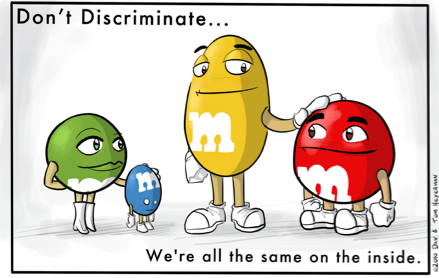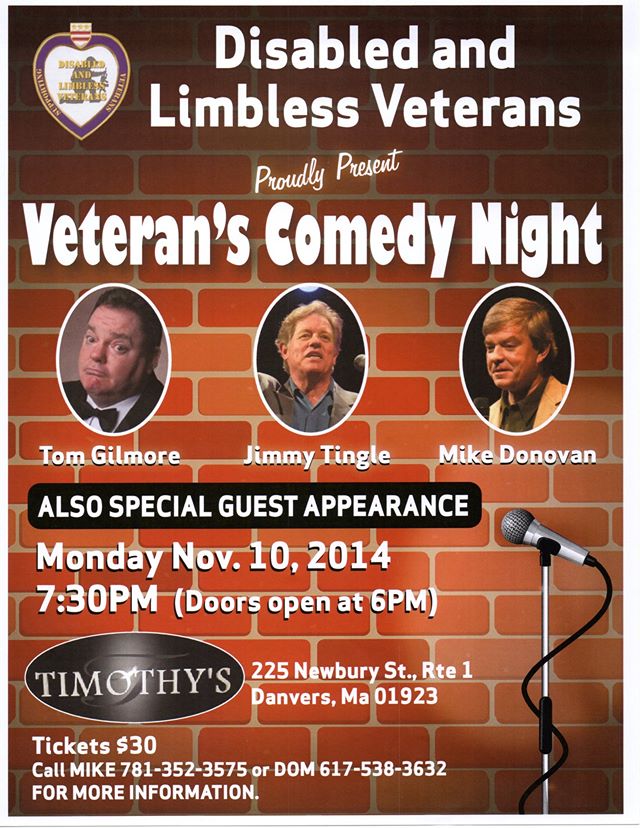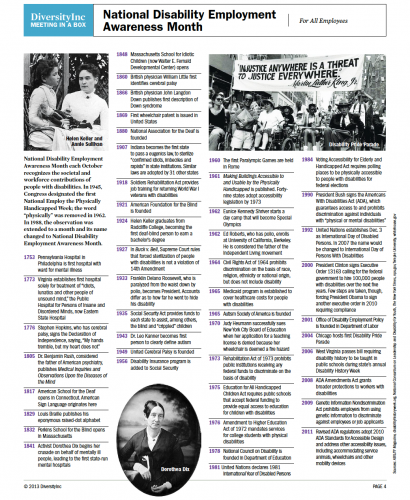
Disability discrimination occurs when an employer or other entity covered by the Americans with Disabilities Act, as amended, or the Rehabilitation Act, as amended, treats a qualified individual with a disability who is an employee or applicant unfavorably because she has a disability.
Disability discrimination also occurs when a covered employer or other entity treats an applicant or employee less favorably because she has a history of a disability (such as cancer that is controlled or in remission) or because she is believed to have a physical or mental impairment that is not transitory (lasting or expected to last six months or less) and minor (even if she does not have such an impairment).
The law requires an employer to provide reasonable accommodation to an employee or job applicant with a disability, unless doing so would cause significant difficulty or expense for the employer (“undue hardship”).
The law also protects people from discrimination based on their relationship with a person with a disability (even if they do not themselves have a disability). For example, it is illegal to discriminate against an employee because her husband has a disability.
Note: Federal employees and applicants are covered by the Rehabilitation Act of 1973, instead of the Americans with Disabilities Act. The protections are mostly the same.
Definition Of Disability
Not everyone with a medical condition is protected by the law. In order to be protected, a person must be qualified for the job and have a disability as defined by the law.
A person can show that he or she has a disability in one of three ways:
- A person may be disabled if he or she has a physical or mental condition that substantially limits a major life activity (such as walking, talking, seeing, hearing, or learning).
- A person may be disabled if he or she has a history of a disability (such as cancer that is in remission).
- A person may be disabled if he is believed to have a physical or mental impairment that is not transitory (lasting or expected to last six months or less) and minor (even if he does not have such an impairment).
Disability Discrimination & Work Situations
The law forbids discrimination when it comes to any aspect of employment, including hiring, firing, pay, job assignments, promotions, layoff, training, fringe benefits, and any other term or condition of employment.
Disability Discrimination & Harassment
It is illegal to harass an applicant or employee because he has a disability, had a disability in the past, or is believed to have a physical or mental impairment that is not transitory (lasting or expected to last six months or less) and minor (even if he does not have such an impairment).
Harassment can include, for example, offensive remarks about a person’s disability. Although the law doesn’t prohibit simple teasing, offhand comments, or isolated incidents that aren’t very serious, harassment is illegal when it is so frequent or severe that it creates a hostile or offensive work environment or when it results in an adverse employment decision (such as the victim being fired or demoted).
The harasser can be the victim’s supervisor, a supervisor in another area, a co-worker, or someone who is not an employee of the employer, such as a client or customer.
Disability Discrimination & Reasonable Accommodation
The law requires an employer to provide reasonable accommodation to an employee or job applicant with a disability, unless doing so would cause significant difficulty or expense for the employer.
A reasonable accommodation is any change in the work environment (or in the way things are usually done) to help a person with a disability apply for a job, perform the duties of a job, or enjoy the benefits and privileges of employment.
Reasonable accommodation might include, for example, making the workplace accessible for wheelchair users or providing a reader or interpreter for someone who is blind or hearing impaired.
While the federal anti-discrimination laws don’t require an employer to accommodate an employee who must care for a disabled family member, the Family and Medical Leave Act (FMLA) may require an employer to take such steps. The Department of Labor enforces the FMLA. For more information, call: 1-866-487-9243.
Disability Discrimination & Reasonable Accommodation & Undue Hardship
An employer doesn’t have to provide an accommodation if doing so would cause undue hardship to the employer.
Undue hardship means that the accommodation would be too difficult or too expensive to provide, in light of the employer’s size, financial resources, and the needs of the business. An employer may not refuse to provide an accommodation just because it involves some cost. An employer does not have to provide the exact accommodation the employee or job applicant wants. If more than one accommodation works, the employer may choose which one to provide.
Disability & Medical Exams During Employment Application & Interview Stage
The law places strict limits on employers when it comes to asking job applicants to answer medical questions, take a medical exam, or identify a disability.
For example, an employer may not ask a job applicant to answer medical questions or take a medical exam before extending a job offer. An employer also may not ask job applicants if they have a disability (or about the nature of an obvious disability). An employer may ask job applicants whether they can perform the job and how they would perform the job, with or without a reasonable accommodation.
Disability & Medical Exams After A Job Offer For Employment
After a job is offered to an applicant, the law allows an employer to condition the job offer on the applicant answering certain medical questions or successfully passing a medical exam, but only if all new employees in the same type of job have to answer the questions or take the exam.
Disability & Medical Exams For Persons Who Have Started Working As Employees
Once a person is hired and has started work, an employer generally can only ask medical questions or require a medical exam if the employer needs medical documentation to support an employee’s request for an accommodation or if the employer believes that an employee is not able to perform a job successfully or safely because of a medical condition.
The law also requires that employers keep all medical records and information confidential and in separate medical files.
 Event Information
Event Information

